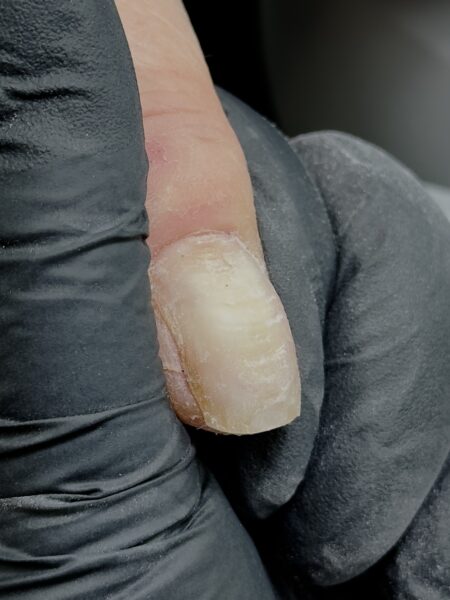
What is a nail habit-tic & can it be treated?
By Katie Barnes | 12 February 2025 | Expert Advice, Feature

When a client sits at your nail desk and presents you with a nail like the below, you may wonder whether it is a contraindication that you should not treat.

Image supplied to Scratch by Jessica Price, OPI Nail Boss of @jessthenailspecialist.
This is habit-tic deformity. Most commonly seen on the thumbnails, this nail condition is usually a result of onychotillomania: a compulsive and repetitive habit of picking at the nails, specifically at the cuticle area.
Habit-tic deformity classically presents as a longitudinal defective band from the cuticle to the free edge. Depressions, often in a washboard pattern, can be present along this band.
With the condition, the cuticles are always compromised and often completely absent, with accompanying redness and swelling along the proximal nail fold. The lunula can also often be more prominent than usual.
Repetitive trauma to the cuticle can result in the irregular growth of the nail, because the cuticle directly overlies the nail matrix: where the beginning of the nail grows.
Consequently, overly aggressive cuticle removal or repetitive pushing back or picking of the cuticle is likely to impact and deform the appearance of the nail. The cuticle is the nail’s protective seal and once this is compromised, new nail will grow in a very abnormal setting. If the problem persists, the nail itself will begin to grow irregularly.
Clients may or may not be aware of their habit; most simply don’t know how to break it or are embarrassed to admit it. A habit can take time and perseverance to break. The application of topical treatments applied for nail biting can be successful with some clients.
Click to learn about different contraindications and how to differentiate them.
Love Katie B x
*Originally published in 2022

Read the latest issue








